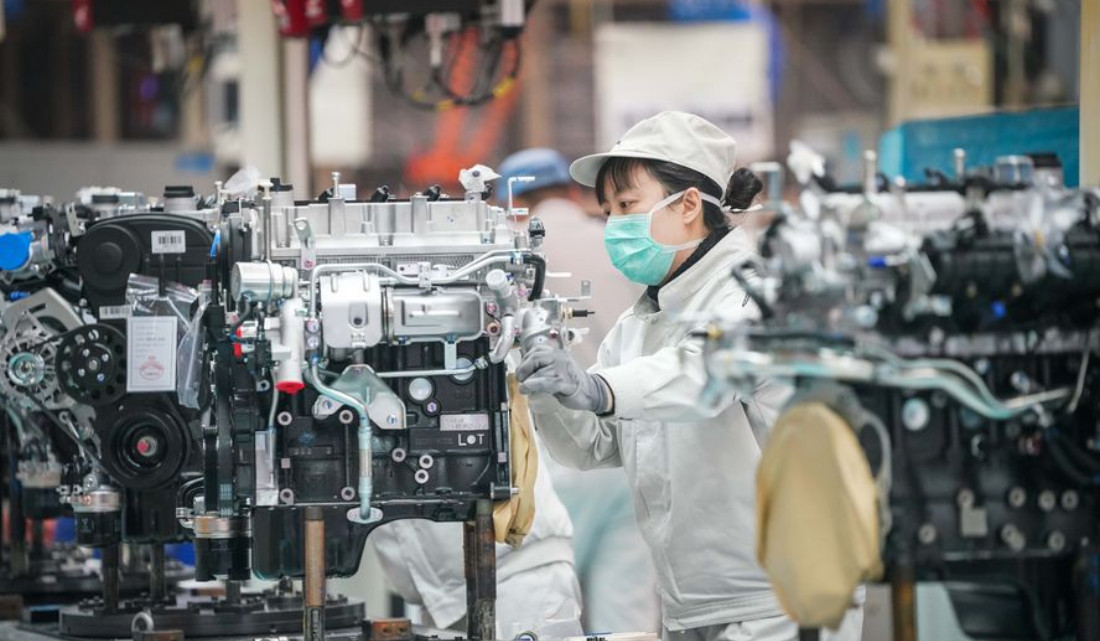3 contrarian investing views on:China, stagflation, supply chain

Recent headlines on rising inflation, property defaults in China and supply chain shortages have had investors ponder whether the market will be overshadowed by these concerns in 2022. As we look towards the new year, my team and I discussed where consensus could prove to be wrong, and we came away with three main ideas that we think are contrarian themes that go against the market consensus.
1. Stagflation Is Highly Unlikely
First, we think the market’s current consensus of a stagflationary environment, in which growth is stagnant but inflation is high, is likely to prove incorrect.
The stagflationist view is that rampant inflation will depress demand, leading to low growth and high inflation like what was seen in the 1970s, which was a terrible time to be invested in stocks. We think that’s highly unlikely. We think that most of the inflation that we’re currently experiencing in the U.S. is a function of temporary supply tightness and logistical issues, which in turn are a function of labour shortages related to COVID-19 and the impact of associated fiscal policies used to combat the pandemic, such as the CARES Act or the Paycheck Protection Program. We believe that as the virus recedes and direct government payments to individuals cease, workers will return to their posts, and much of the inflationary pressure that we have experienced this year will abate.
In fact, while nothing is impossible, we would say that it is mathematically implausible that inflation can continue at 2021’s pace. Inflation has been driven by too many one-offs that are simply unlikely to repeat in 2022. Used car prices in the U.S., for instance, are up 21% this year. Does anyone really think they’ll be up another 21% next year? That sounds like a stretch to us.
2. Time to Short the Shortages
Our second non-consensus view is that it’s time to “short the shortages.” The mainstream news media is filled with stories about product shortages and supply chain bottlenecks. Telling you that Christmas is cancelled this year is a great way for them to keep your eyes glued to the TV screen, but don’t buy it. Prices and backlogs for everything from soybeans to steel to shipping containers and semiconductors rose to unsustainable levels this year, but many are already showing signs of having peaked. Many commodity prices such as iron ore are past their peak, port congestion is showing signs of easing, and semiconductor inventories are actually rising. We think there may be an opportunity to try to take some profits in these areas of the market.
3. Getting More Constructive on China
Our final non-consensus view is that it’s time to get more constructive on China into 2022. We think a way to invest in the Chinese market is to follow its policy direction. In late 2020, the Chinese government made clear its intentions to decrease stimulus in 2021. That meant that money supply growth would decline, and total social financing would decrease, leading to a downcycle in credit. That’s exactly what happened. In 2021, Chinese bond yields rose, equities declined, and the credit market is now plagued by distress surrounding the defaults of property companies.
Now, however, the tone from the government is starting to change. With the property market accounting for a quarter of the country’s GDP by some estimates, they can’t simply allow a massive sector-wide default. We think that the well-publicized default of a few of the weaker players will be contained and may in retrospect represent the bottoming of the Chinese credit cycle. The central bank already cut interest rates, and now the government is telling the banks to continue to extend credit to property developers for existing projects. Signals like that are usually a good indicator that it’s time to start getting more constructive on Chinese assets as we head to 2022.
-- Contact us at [email protected]
-

Equip young people for the future Dr. Winnie Tang
In late February, the inaugural flight of an air taxi from Shenzhen Shekou Cruise Homeport to Zhuhai Jiuzhou Port took only 20 minutes with an estimated one-way ticket price of 200 to 300 yuan per
-

Are we raising a generation of leaders, or of followers? Brian YS Wong
The essence of education is defined not by the facts it imparts, but the potential knowledge it inspires students to individually pursue on their own. Put it this way – the ideal form of education
-

The urgent need for reforms to sex education in Hong Kong Sharon Chau
Nearly one in every four university students (23%) in Hong Kong has been sexually harassed, according to a 2019 report published by the Equal Opportunities Commission (EOC). A 2019 study found that
-

STEAM should be linked to real life Dr. Winnie Tang
In the 2017 Policy Address, STEM (science, technology, engineering and mathematics) education was proposed as one of the eight major directions to promote I&T development. Since then, funding has
-

Let trees speak for themselves Dr. Winnie Tang
I often say that smart cities start with smart planning, but smart planning presupposes adequate, systematic and up-to-date data. This is important not only for city administration, but also for tree















